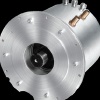|
White paper prepared for the Michigan Department of Transportation
Two of the most important developments in automotive technology underway are the introduction
of vehicle communications and the electrification of the powertrain. While these two technologies
largely have evolved separately, their future evolution will not be in isolation. Furthermore, these
two technologies reinforce one another, each making the other more effective. Recognizing this
potential, the Center for Automotive Research (CAR), with the support of the Michigan
Department of Transportation (MDOT), a recognized leader in IntelliDriveSM technology, has
investigated the links and synergies between these two technologies and their coincidental
development. This document presents CAR’s thoughts on the potential of these two technologies
to make each other stronger in the market. Ultimately, the goals of this paper are to raise awareness
of the potential added benefits of being “green and connected” and to begin a dialogue on how best
to achieve these benefits.
CAR and MDOT have several objectives in developing and releasing this white paper. First, they
want to document the interactions between communication and electrification technologies,
showing how their simultaneous development enhances both. Second, they seek to describe the
technical, regulatory, and other factors that are needed to allow these technologies to achieve wide
deployment and for the traveling public to realize their full benefits. Third, they want to explore
opportunities for the State of Michigan to establish leadership and benefit the State’s economy and
industry.
IntelliDriveSM and Vehicle Communications
The United States Department of Transportation (USDOT) has launched a national program to
enhance vehicle transportation through the applications of communication technologies. This
program, known as IntelliDriveSM (succeeding the USDOT’s VII, for Vehicle-Infrastructure
Integration, program), targets safety, mobility, and environmental improvements through a
combination of vehicle-to-vehicle and vehicle-to-infrastructure communications. Already, these
technologies have been demonstrated in the State of Michigan and elsewhere. Led by MDOT,
Michigan has committed itself to a leadership role within the national IntelliDriveSM effort.
IntelliDriveSM allows vehicles to communicate with each other and the roadway to enhance
situational awareness and ultimately enable cooperative, active safety systems. Rather than defining
a specific technological solution, IntelliDriveSM consists of multiple in-vehicle and roadside
communication technologies, along with data processing and applications that enable vehicles to
obtain and share information with each other and the world, including transportation infrastructure
operators. Thus, IntelliDriveSM leverages existing 3G, 4G, and other communication networks
where and when they make sense (such as for mobility applications).
The negative externalities of vehicle travel are stark. Every year, 40,000 Americans lose their lives in
motor vehicle crashes (United States Census Bureau 2010). Each year, we lose millions of hours
stuck in traffic. And every year, we waste billions of dollars in fuel caught in traffic congestion
(Schrank and Lomax 2009). Technology can change this. Today, the U.S. DOT, state DOTs, the
American Association of State Highway and Transportation Officials (AASHTO), and private
industry are working together to implement IntelliDriveSM, a system that allows vehicles to
communicate with each other and the roadway. Vehicle-to-infrastructure (V2I) connectivity
involves communication of the vehicle with the roadway, traffic signals, and other pieces of
infrastructure, such as bridges. Vehicle-to-vehicle (V2V) connectivity entails vehicles equipped with
communication devices that can speak to each other. Each has different benefits which are
described below.
When fully deployed, IntelliDriveSM will help drivers bypass congestion, and it will reduce crashes by
providing advanced safety warnings. It will even be able to take over the vehicle when there is not
enough time for the driver to react. IntelliDriveSM will also help us manage traffic, alerting drivers to
upcoming congestion, advising them of alternative routes(US Department of Transportation 2010),
and altering the timing of traffic signals to improve traffic flow (Park and Joyoung 2009). It can
even help owners with vehicle maintenance by reporting pending problems, keeping small repairs
from becoming larger and more expensive.
read more
|
|
Какъв автомобил бихте закупили?

|
Декември 2025
|

|
|
| Нед |
Пон |
Вто |
Сря |
Чет |
Пет |
Съб |
| | | | | | | | | | | | | | | | | | | | | | | | | | | | | | | | | | | |
|














